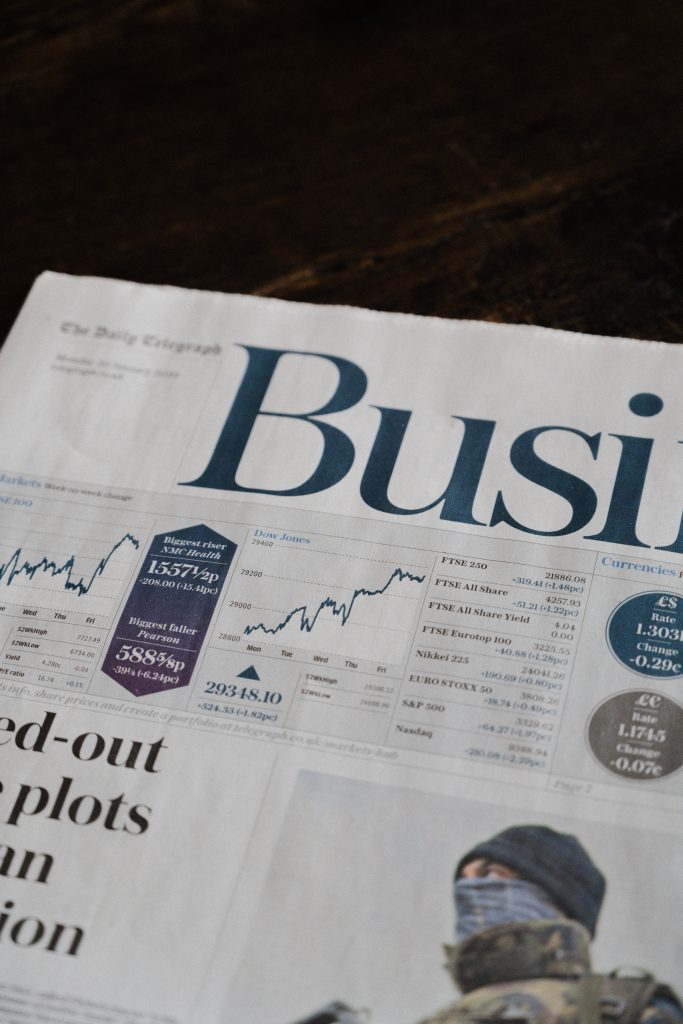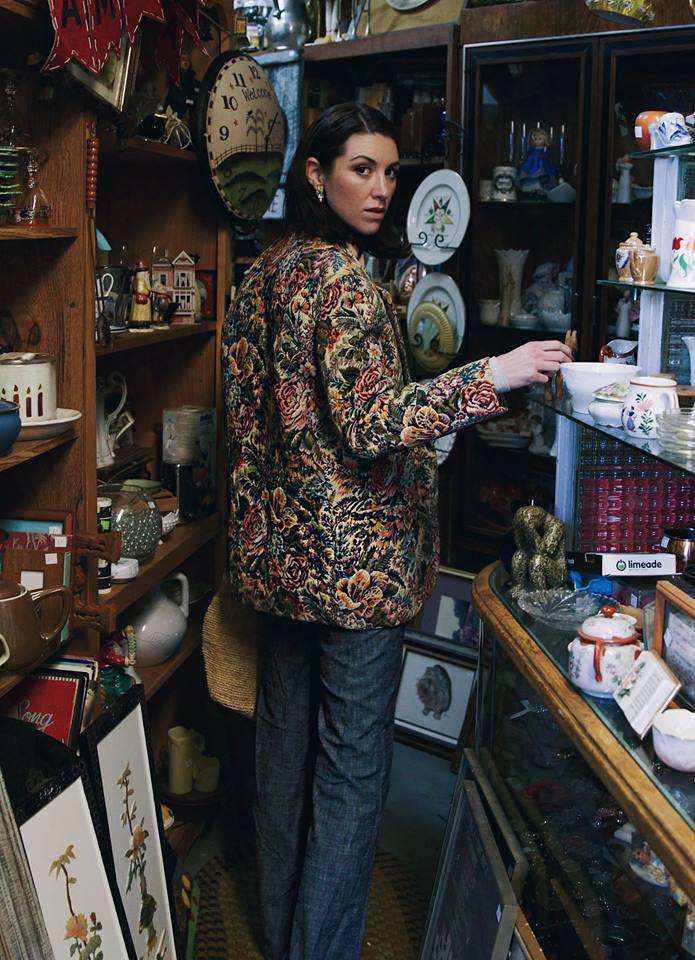Breaking Down the ESG Umbrella with Economist Rocco Ciciretti

[apss-share]
I am text block. Click edit button to change this text. Lorem ipsum dolor sit amet, consectetur adipiscing elit. Ut elit tellus, luctus nec ullamcorper mattis, pulvinar dapibus leo.
When it comes to sustainable investing and understanding the future of corporate reporting many of us are understandably lost. Environmental, Social & Governance ratings are a relatively new phenomenon and as Dr. Rocco Ciciretti points out there’s still a lot to learn for consumers, investors, and for the corporations themselves. I had the great pleasure of having Dr. Rocco Ciciretti as an economics professor years ago so when I started to delve into this topic I reach out to gain a better understanding. Below is the interview which helps us navigate the intricacies of evaluating companies who endeavor to leave a positive social and environmental footprint.
Interview has been edited for both clarity and brevity.
C: Talk to us a bit about what CSR (corporate social responsibility), SRI (socially responsible investing) and ESG (Environmental, Social & Governance) are and what they mean to corporations and individual consumers.
R: ESG is the umbrella under which CSR and SRI sit. ESG says if you apply E+S+G criteria you take into account the supply side which is CSR and the demand side which is SRI. Companies supply to the market their product using CSR but if you only supply ESG through CSR and nobody buys we say in economics that the market failed because you cannot clear the price. It’s a cleaning system. Market failure in economics means you don’t clear the price because you don’t match the price.
The demand side – SRI – is related to us both as consumers and investors. As a consumer I buy a product and as an investor I buy the stock of your company that produces that product. The socially responsible investing depends on the fact that if I buy your product your stock price goes up. The market equilibrium happens when the business strategy decided by the company in CSR terms fits the market demand (consumers) in terms of consumption of CSR goods and/or services and in terms of consumption of financial assets (investors).
C: Lately, there seems to be some talk surrounding CSR and how it may just be another form of corporate greenwashing leading consumers to lose trust in part due to lack of transparency. What are your thoughts on these concerns? Are they valid?
R: The difference between greenwashing and information is that greenwashing does not have value behind it. Information is the value. Price in the market changes as information changes. This information is related to the fundamental value. Information can then be translated to marketing but the fundamental idea of ESG through CSR is that when you advertise something you can prove why. It’s a way to root out greenwashing. Digging behind the marketing to look at the information provided by the ESG rating agencies.

C: Do governments have a role to play in the implementation or providing of guidelines for CSR across the private sector? What kind of challenges does this present?
R: I personally believe that the ESG standard cannot be settle by law or by government. ESG should be based on a voluntary bases and leave the market to choose. The pricing mechanism and the voting with the wallet will avoid greenwashing in the long run.
C: Going back just a bit to the viability of CSR, do you think it is a truly sustainable business model? The concern of course being that at its core CSR is only as viable as the company’s profits.
R: CSR is sustainable over time if and only if the demand side realize that the market is made by two sides and CSR in only the supply one. The active role of the demand side is important for the long run sustainability process of the ESG business strategy of the firms.
ing elit. Ut elit tellus, luctus nec ullamcorper mattis, pulvinar dapibus leo.
C: There’s been a widespread global call, especially among the youth, to overhaul current financial systems due to its negative environmental impact and lack of living wages. Is SRI a viable solution to transforming current capitalist structures? If not, can and how can corporations utilize SRI to meet the demands of younger generations?
R: SRI is the fastest way to reach younger generations. Financial markets are faster than the real economy and investors can define the market price of financial assets using their savings to reward companies that apply ESG criteria in their business. In addition to that, financial markets are transparent and any investors can check the firm activities looking at their financial and non-financial reports.
The work we do at the University is we create the ESG risk factor and then split the S & G to use the data from the rating companies which break up into 170 different subsections. You can have clean water as one of those subsections. Each company provides a declaration and then in our analysis we check if when the level changes from 5 to 100 if the price and risk change according to this number. The idea is that in our analysis we want to check if for example the number is 70 the changing price is related to the market level. For a listed company you have enough data to double check what the Chief Responsible Officer said in the market by looking at their financial data.
C: Can you give readers an overview of one company that you think is doing a good job with corporate social responsibility and one that needs to improve?
R: It’s hard to say because when we study ESG in financial markets we have more the eight thousand companies all over the world and we treat each individual company looking at the data they have. I don’t look at the name. My job is to relate the ESG rating to the risk return performance and to say the higher the ESG rating the lower the risk and the lower is the return. The more you buy ESG the more you lower your risk. The name doesn’t matter.
C: Considering the widespread business practices of profit over people and planet, widely seen in the stock market and answering to company boards, can SRI truly be a sustainable practice? If so, why and if not, what kind of changes would you like to see?
R: When price of the stock goes down the manager and the board are subject to (hostile) takeover by the market. Selling those stocks that perform poorly in ESG criteria and buying those that perform well is the best way for individuals to play an active role (engagement) in defining SRI as a truly sustainable practice.

C: What responsibilities do corporations and individuals alike bear when implementing SRI? Should they mimic the current political and social climates or should they push to meet the needs of future generations?
R: Firms should try to reach ESG criteria more and more over time to be sustainable over the long run and define a new sustainable economic paradigm. Individuals (as consumers and investors) must help *guide* firms *by* choosing good and services from those companies that show a true interest in redirecting their business strategy towards ESG criteria
C: For the layperson who wants to support companies invested in authentic CSR and SRI practices, what are some tools they can utilize when researching?
R: Investors and consumers can look at reports on products (i.e. Nielsen report, Global Sustainable Investment Review by Global sustainable investment alliance, US Social Investment Forum Foundation) and/or firms specific non-financial report, as well as third parties ESG rating agencies that provide information to define individual strategy to choose among all products/firms that make efforts to provide a sustainable market.
People in the financial markets believe that if they sell ESG it’s better but better to what? You still have to understand the risk/return. If we don’t understand the financial value of ESG we could end up with a bubble because people are paying more for something that is worth less solely based on perceived value rather than the actual risk/return.
C: Is the change to incorporate ESG and consumer demand happening fast enough to address climate change?
R: No. Climate change is not the priority for companies now. I believe if you don’t let the social part of ESG improve you cannot ask from a person who receives one thousand dollars a month to buy good food for their health and conduct proper waste management because they are focused on surviving. My position is that the environment was pushed too fast without taking care of the social part. People work every day for the environment but if you don’t let people work in a good environment such as enough money to eat they aren’t going to go clean the park. They’re too worried about eating. If you don’t have social stability (ESG criteria), the community and the worker related to that company, you cannot push the environment(al factors) faster because if the worker can’t survive until tomorrow why would they care about the long term environmental outcomes?
C: Any final thoughts? What would you like to see happen within the global financial world with respect to CSR and SRI?
R: I would like to see individuals aware of the possibility that demand can play an active role. To see more CSR in the market, consumers and investors must act as first movers and (then push) companies to implement more and more ESG criteria in their business activity, showing that those companies get a market reward for the shift in their business behavior.

Rocco is Associate professor of Economic policy at Department of Economics and Finance – University of Rome Tor Vergata, where he currently teaches two graduate courses: Financial market models, and Applied finance. He is Board member of COMETA pension fund, and Graduate program coordinator in Finance and Banking. During the 2016-2018, he coordinated the Graduate program in Financial markets and financial intermediation.
He is Research fellow at SOM Research Institute at University of Groningen, at RCEA – Rimini, and at CEIS – University of Rome Tor Vergata where he is also Assistant editor for the CEIS Research papers series. Rocco was Research fellow at SIRP (funded by MISTRA), and at EPRU – University of Leicester School of Management. He was Visiting professor at New York University, and Fordham University.
He is referee for several international journals, and he published in Journal of Corporate Finance, Journal of Banking and Finance, Journal of Financial Stability, Journal of International Money and Finance, Journal of Financial Services and Research, St. Louis FED Economic Review, Journal of Business Research, Applied Financial Economics, Applied Economics, European Journal of Finance, International Review of Economics, Giornale degli Economisti e Annali di Economia, and for ELSEVIER, NOVA SCIENCE, ROUTLEDGE, BANCARIA, Giappichelli.
Dr. Ciciretti served as Financial economist and assistant policy advisor in the Finance team at the Research department of the Federal Reserve Bank of Atlanta. Prior to joining the FED, he was Research associate in finance at the Lally School of Management and Technology-Rensselaer Polytechnic Institute in Troy, NY.
A native of Italy, Dr. Ciciretti received his doctorate degree in Financial markets and institutions and his master of science degree in Economics and institutions from the University of Rome Tor Vergata. He earned a bachelor degree in Economics from the University LUISS-Guido Carli.
This interview was originally published on CaitBagby.com (now merged with this site) on 22 July 2020



